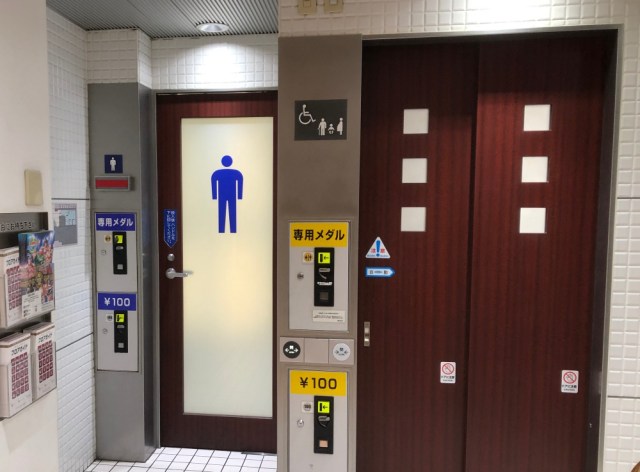
Find out why some toilets come with an entry fee.
Just the other week, our Japanese-language reporter Yuichiro Wasai was making his way home through Ikebukuro Station when he stumbled upon a fancy pay-to-use toilet called Prime Toilettes.
The luxury experience piqued his curiosity about the whole pay-to-use toilet system, so when he found himself at Tokyo Station last week, he decided to see if they also offered the same type of exclusive public toilet on their premises.
After enquiring at the information desk he was directed to Kitchen Street, which is known for its large cluster of restaurants, and, as it turns out, a couple of pay toilets as well.
Having already familiarised himself with the system at Ikebukuro, Yuichiro reached into his pocket and took out a 100-yen (US$0.91) coin.
He slid the coin into the machine, which then allowed him to turn the handle and step inside the previously locked restroom.
▼ It was quiet and clean – the perfect place to squeeze out a stubborn number two.
▼ Each cubicle was equipped with a baby chair, which is a godsend for parents.
▼ The urinals were modern and spotless.
▼ And though the washbasins were a little outdated, they were still clean, with automatic taps.
While it was a nice bathroom, it wasn’t as spectacular as the Prime Toilettes, but these pay toilets weren’t offering users a luxury experience. So why would people pay to use them? Were the free-to-use toilets really that bad? With those questions in mind, Yuichiro headed to the regular public toilets, which were so close to these ones it took him less than 27 seconds to get there.
Yuichiro didn’t have to hand over a single yen to use these toilets, which was strange, seeing as they had a far more inviting entrance than the pay-to-use ones.
▼ Inside, they looked more modern as well.
The only real difference, apart from the tiles, was the fact that the washlet panel for the toilet was located by the seat instead of on the wall.
There was also this notice pasted inside the cubicles, which asked users to refrain from leaving hypodermic needles behind.
After walking away from this restroom, it took Yuichiro another 30 seconds before he came across another free public toilet.
▼ This one looked even better than the other two.
Curious to find out why Tokyo Station offered both free and pay-to-use toilets when there wasn’t much of a difference between them, Yuichiro sent an email off to staff asking them that very question.
It didn’t take them long to reply, and in their email they mentioned that the pay toilets, which were installed in 1989, were being offered by the operators of Kitchen Street as an extra special level of service. At times when other toilets at the station are busy or occupied, there’s a higher chance that there’ll be a free stall in a pay-to-use toilet, and if people are concerned about cleanliness in regular restrooms at the station, they can always opt to use the less-frequented (and therefore cleaner) pay toilets.
That all made perfect sense to Yuichiro, and now that he knows he has a good chance of having an entire bathroom at Tokyo Station all to himself in return for 100 yen, he’ll be heading back to Kitchen Street soon. After all, it’s not far from the station souvenir stores selling all his favourite limited-edition chocolates.
Photos © SoraNews24

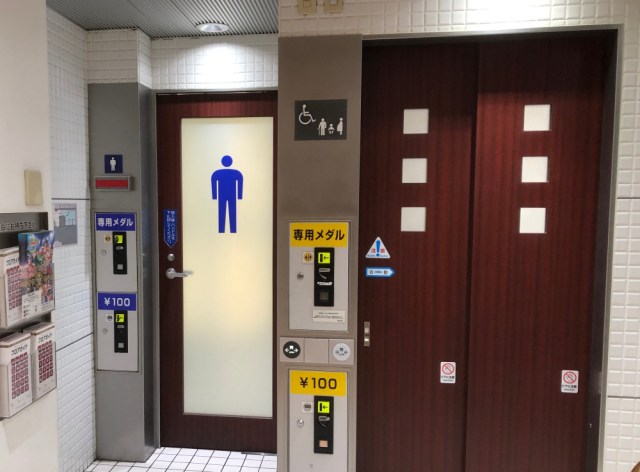
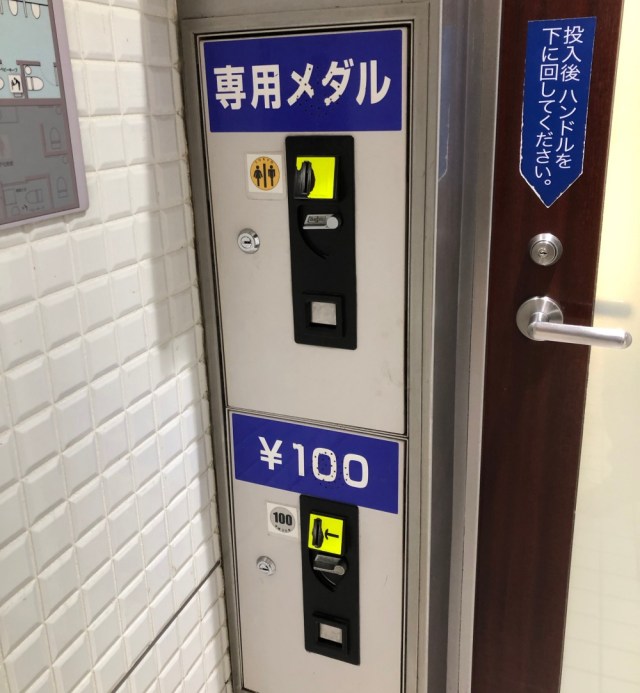

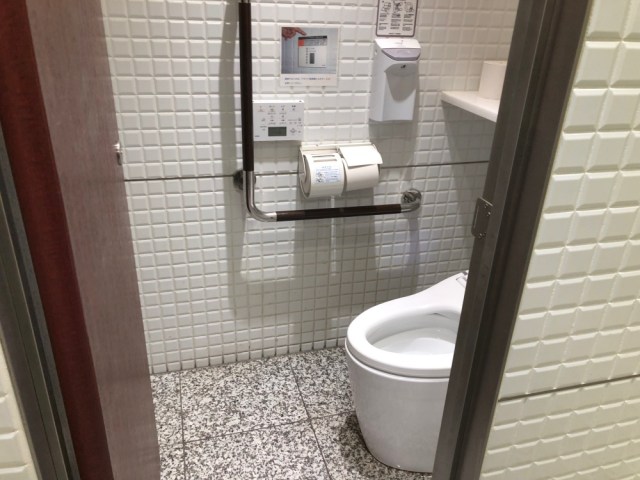
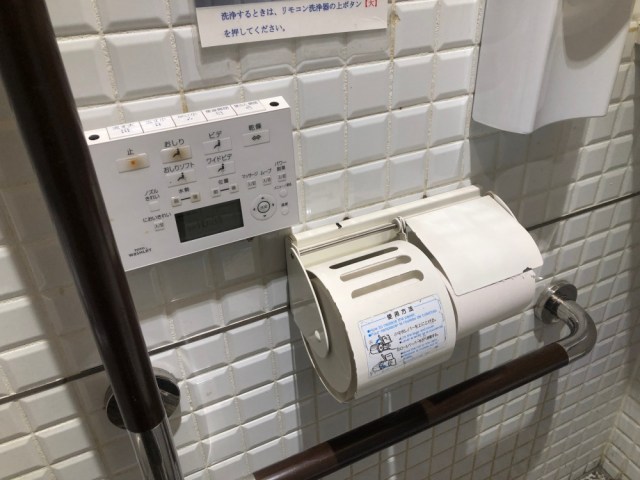
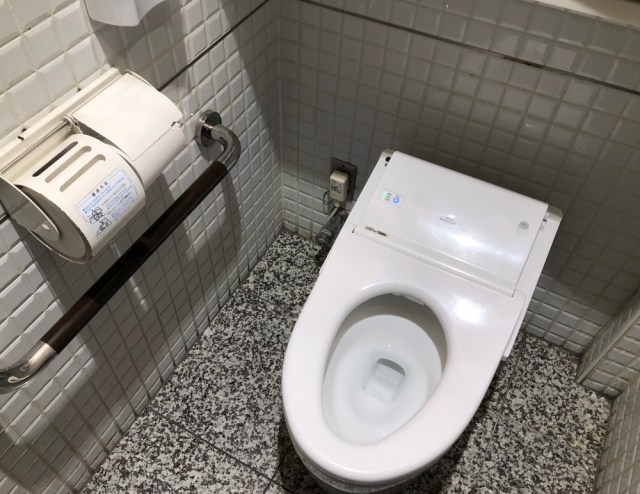
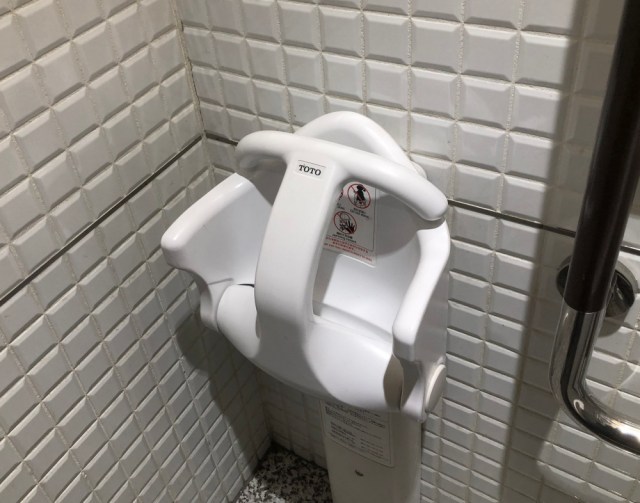
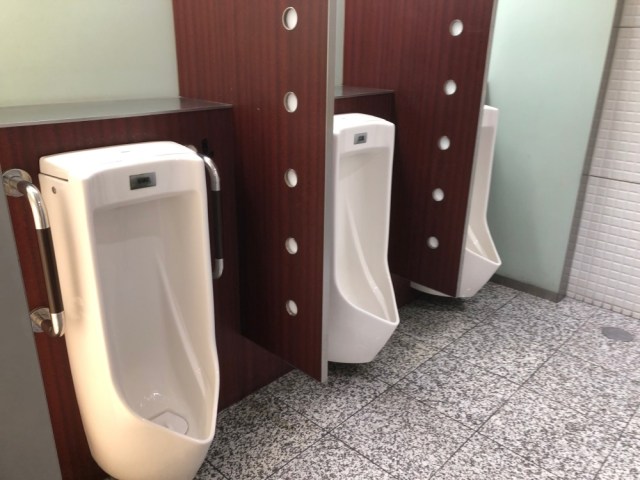
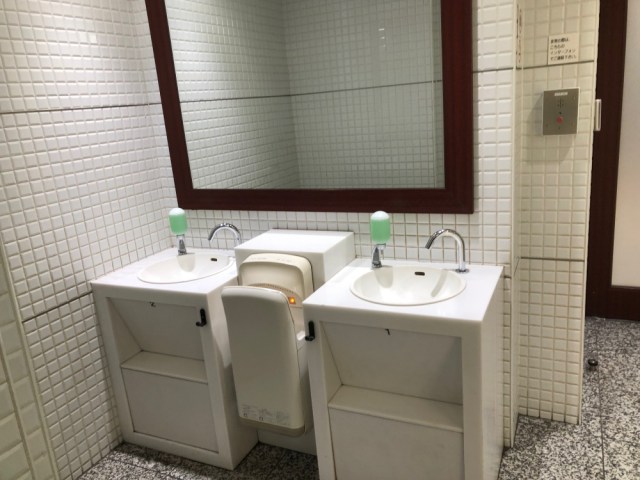
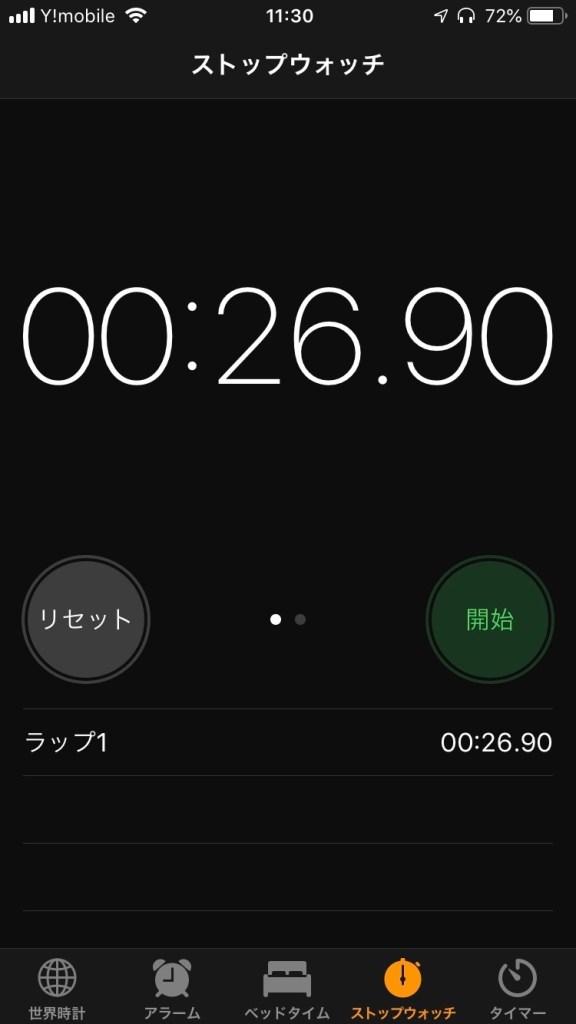
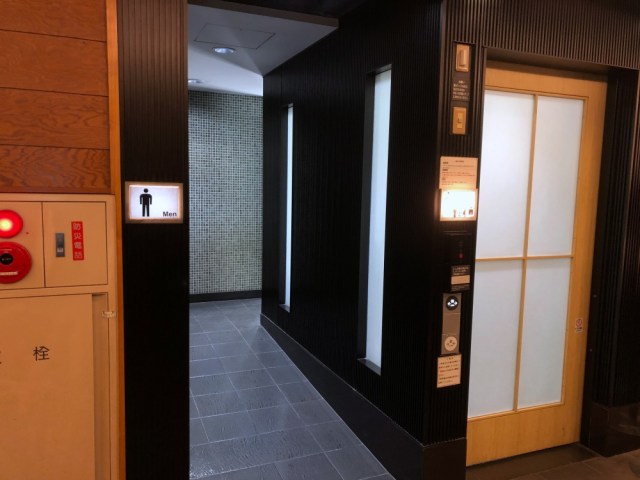
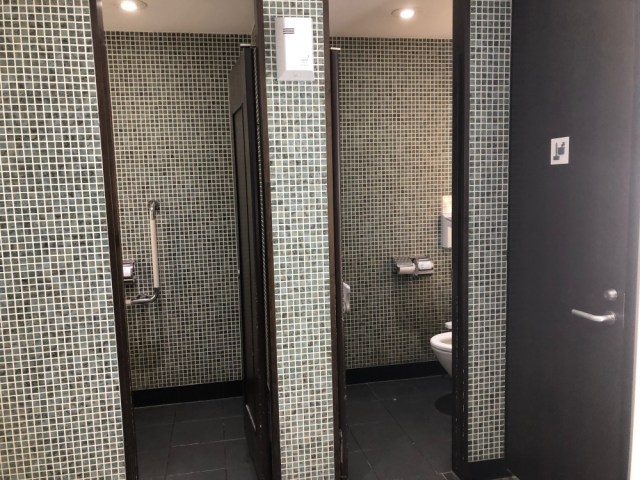
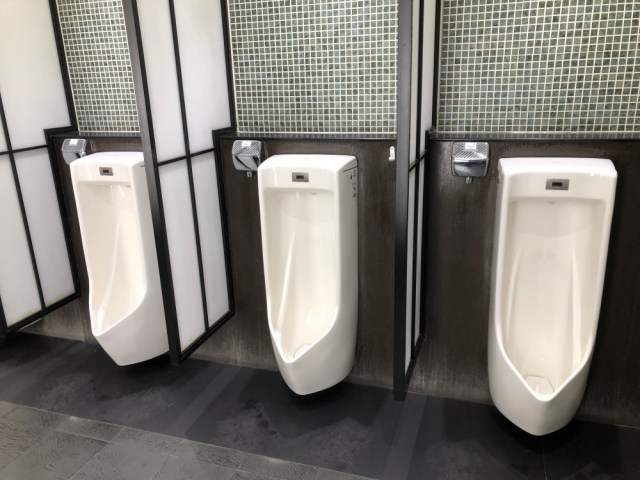
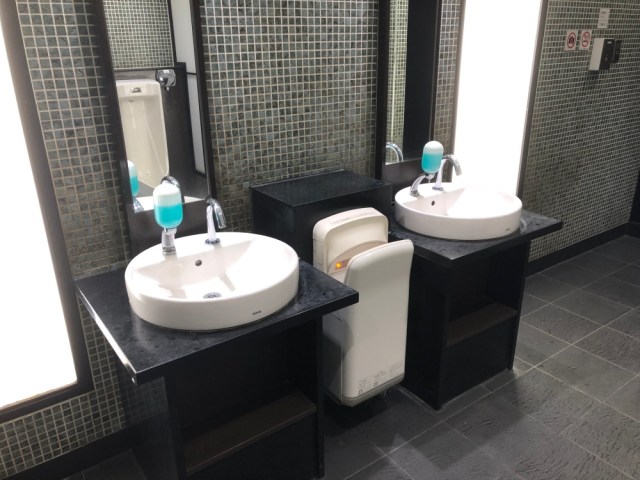
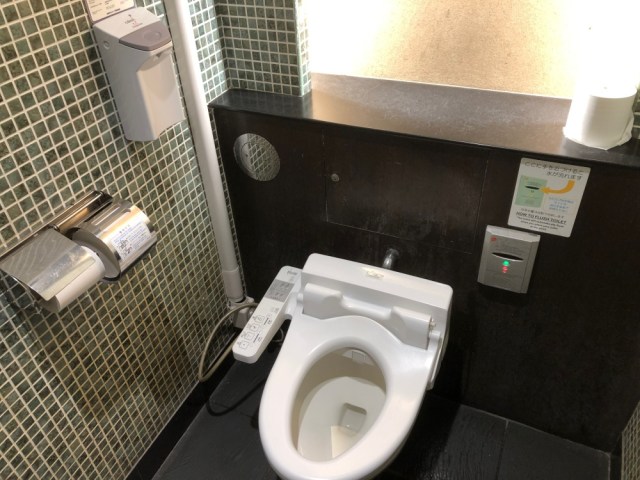
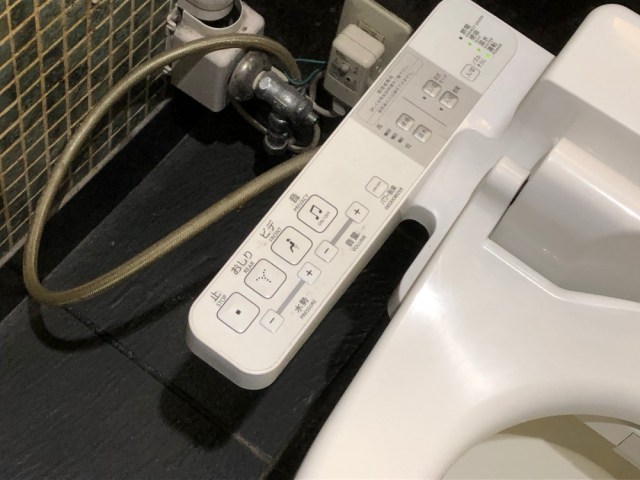
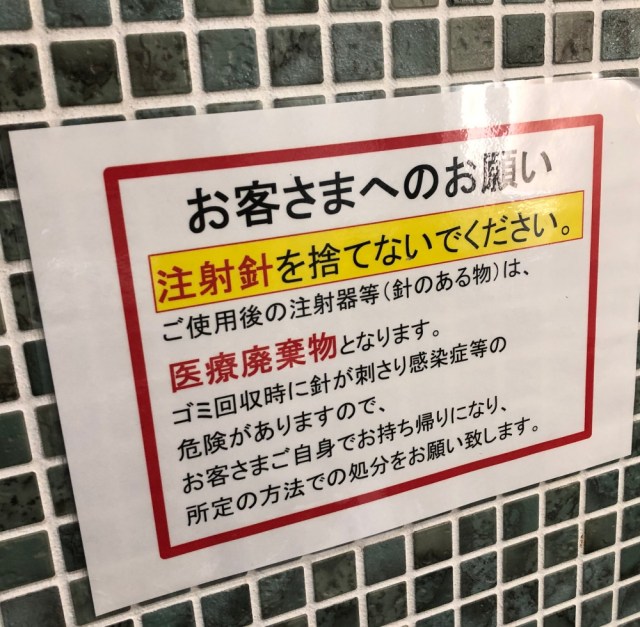
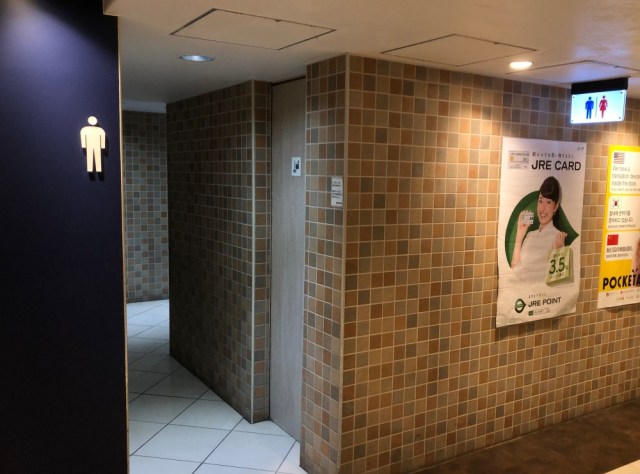
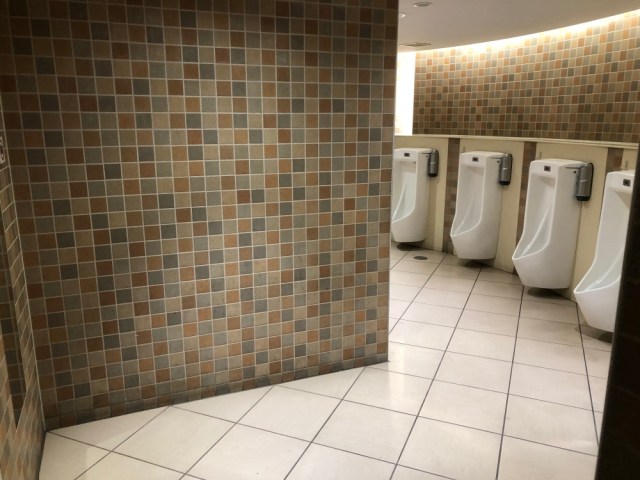
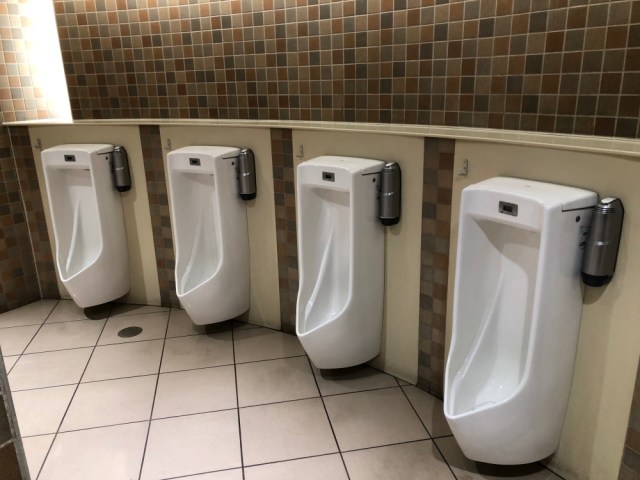
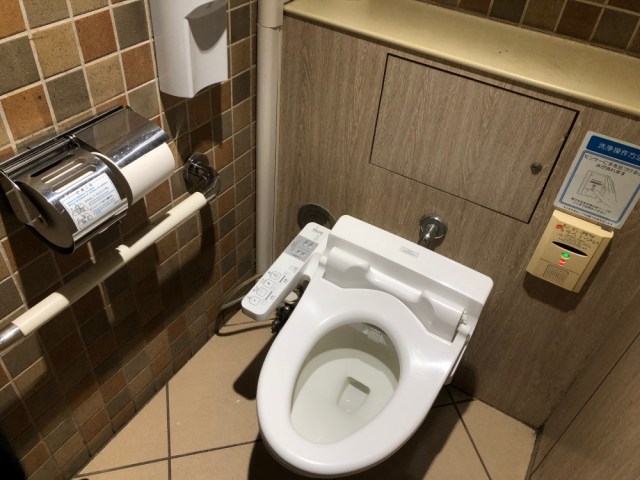

 We try a pay-to-use premium Japanese toilet at Ikebukuro train station in Tokyo
We try a pay-to-use premium Japanese toilet at Ikebukuro train station in Tokyo Tokyo Station Waterscape Toilet looks more like an aquarium than a bathroom
Tokyo Station Waterscape Toilet looks more like an aquarium than a bathroom Tokyu Kabukicho Tower backtracks on its gender-neutral toilets, rejigging them to appease public
Tokyu Kabukicho Tower backtracks on its gender-neutral toilets, rejigging them to appease public Japanese public toilet in Tokyo has windows that change colour when you use it
Japanese public toilet in Tokyo has windows that change colour when you use it Is that a public toilet or a performing arts hall? In Tokyo, you never know
Is that a public toilet or a performing arts hall? In Tokyo, you never know 7-Eleven Japan’s ramen-cooking robot whipped us up a bowl of noodles【Taste test】
7-Eleven Japan’s ramen-cooking robot whipped us up a bowl of noodles【Taste test】 Why you shouldn’t call this food “Hiroshimayaki” if you’re talking to people from Hiroshima
Why you shouldn’t call this food “Hiroshimayaki” if you’re talking to people from Hiroshima Japan’s otoshidama tradition of giving kids money at New Year’s gets a social welfare upgrade
Japan’s otoshidama tradition of giving kids money at New Year’s gets a social welfare upgrade Lacquerware supplier to emperor of Japan and Pokémon team up for new tableware
Lacquerware supplier to emperor of Japan and Pokémon team up for new tableware Inuyasha gets gigantic line of anime fashion items with shirts, skirts, jackets, hats, and more【Pics】
Inuyasha gets gigantic line of anime fashion items with shirts, skirts, jackets, hats, and more【Pics】 This is what a million yen of lottery tickets looks like, and a secret that’ll make us rich【Pics】
This is what a million yen of lottery tickets looks like, and a secret that’ll make us rich【Pics】 Japanese avoiding domestic travel as foreign tourists increase, possibly creating vicious cycle
Japanese avoiding domestic travel as foreign tourists increase, possibly creating vicious cycle The 10 best day trips from downtown Tokyo【Survey】
The 10 best day trips from downtown Tokyo【Survey】 Is this the most relaxing Starbucks in Japan?
Is this the most relaxing Starbucks in Japan? Sailor Moon wedding reception plans to be offered in Japan
Sailor Moon wedding reception plans to be offered in Japan 7-Eleven Japan starts new temporary luggage storage service in over 300 branches
7-Eleven Japan starts new temporary luggage storage service in over 300 branches Disillusionment at Tsukiji’s tourist-target prices led us to a great ramen restaurant in Tokyo
Disillusionment at Tsukiji’s tourist-target prices led us to a great ramen restaurant in Tokyo Starbucks teams up with 166-year-old Kyoto doll maker for Year of the Horse decorations【Photos】
Starbucks teams up with 166-year-old Kyoto doll maker for Year of the Horse decorations【Photos】 Japan may add Japanese language proficiency, lifestyle classes to permanent foreign resident requirements
Japan may add Japanese language proficiency, lifestyle classes to permanent foreign resident requirements Starbucks Japan releases new zodiac chilled cup drink for 2026
Starbucks Japan releases new zodiac chilled cup drink for 2026 Tokyo’s Tsukiji sushi neighborhood asks tour groups to stay away for the rest of the month
Tokyo’s Tsukiji sushi neighborhood asks tour groups to stay away for the rest of the month Starbucks on a Shinkansen bullet train platform: 6 tips for using the automated store in Japan
Starbucks on a Shinkansen bullet train platform: 6 tips for using the automated store in Japan Street Fighter Hadouken Churros to be launched and eaten in Tokyo, Okami pudding on offer too
Street Fighter Hadouken Churros to be launched and eaten in Tokyo, Okami pudding on offer too Japan’s human washing machines will go on sale to general public, demos to be held in Tokyo
Japan’s human washing machines will go on sale to general public, demos to be held in Tokyo Japanese train company is letting fans buy its actual ticket gates for their homes
Japanese train company is letting fans buy its actual ticket gates for their homes Tokyo considering law requiring more trash cans following litter increase in heavily touristed area
Tokyo considering law requiring more trash cans following litter increase in heavily touristed area Nintendo’s Kirby now delivering orders at Kura Sushi restaurants, but not in Japan
Nintendo’s Kirby now delivering orders at Kura Sushi restaurants, but not in Japan Tokyo event lets you travel back in time, for free, to celebrate 100 years since Showa era start
Tokyo event lets you travel back in time, for free, to celebrate 100 years since Showa era start Sanrio theme park in Japan announces plans to expand into a Sanrio resort
Sanrio theme park in Japan announces plans to expand into a Sanrio resort Survey asks foreign tourists what bothered them in Japan, more than half gave same answer
Survey asks foreign tourists what bothered them in Japan, more than half gave same answer Japan’s deadliest food claims more victims, but why do people keep eating it for New Year’s?
Japan’s deadliest food claims more victims, but why do people keep eating it for New Year’s? We deeply regret going into this tunnel on our walk in the mountains of Japan
We deeply regret going into this tunnel on our walk in the mountains of Japan Studio Ghibli releases Kodama forest spirits from Princess Mononoke to light up your home
Studio Ghibli releases Kodama forest spirits from Princess Mononoke to light up your home Major Japanese hotel chain says reservations via overseas booking sites may not be valid
Major Japanese hotel chain says reservations via overseas booking sites may not be valid Put sesame oil in your coffee? Japanese maker says it’s the best way to start your day【Taste test】
Put sesame oil in your coffee? Japanese maker says it’s the best way to start your day【Taste test】 The top 10 annoying foreign tourist behaviors on trains, as chosen by Japanese people【Survey】
The top 10 annoying foreign tourist behaviors on trains, as chosen by Japanese people【Survey】 No more using real katana for tourism activities, Japan’s National Police Agency says
No more using real katana for tourism activities, Japan’s National Police Agency says Starbucks Japan reveals new sakura drinkware collection, inspired by evening cherry blossoms
Starbucks Japan reveals new sakura drinkware collection, inspired by evening cherry blossoms A message from Japanese train station toilet paper: Don’t stare at your smartphone while walking
A message from Japanese train station toilet paper: Don’t stare at your smartphone while walking We celebrate “Toilet Day” in Japan with a visit to a public toilet worth 100 million yen
We celebrate “Toilet Day” in Japan with a visit to a public toilet worth 100 million yen Japanese public toilet in Tokyo is more like a fancy restaurant than a restroom
Japanese public toilet in Tokyo is more like a fancy restaurant than a restroom “World’s most spacious public toilet” baffles the mind in Japan
“World’s most spacious public toilet” baffles the mind in Japan Poll reveals what we already know: Japanese toilets make no sense, confuse us all
Poll reveals what we already know: Japanese toilets make no sense, confuse us all Journey to Toilet Heaven: Our Writer’s Cheeks-On Experience of the World’s Most Spacious Public Toilet
Journey to Toilet Heaven: Our Writer’s Cheeks-On Experience of the World’s Most Spacious Public Toilet Japanese public toilet becomes a tourist attraction in Tokyo
Japanese public toilet becomes a tourist attraction in Tokyo Random act of kindness in a Japanese toilet cubicle has us reaching for tissues
Random act of kindness in a Japanese toilet cubicle has us reaching for tissues Golden Japanese toilet appears at “multi-millionaire” izakaya in Tokyo
Golden Japanese toilet appears at “multi-millionaire” izakaya in Tokyo Holy crap! Guy caught eating poop in ladies’ toilet
Holy crap! Guy caught eating poop in ladies’ toilet Flush your prayers down the toilet at this unique Japanese temple
Flush your prayers down the toilet at this unique Japanese temple Commotion at Akihabara Station as bomb squad called in to remove suspicious object
Commotion at Akihabara Station as bomb squad called in to remove suspicious object We tried Mama’s Poop served fresh from a Tokyo eatery
We tried Mama’s Poop served fresh from a Tokyo eatery Smartphone app finds empty restroom stalls in Tokyo subway station, makes pooing easier than ever
Smartphone app finds empty restroom stalls in Tokyo subway station, makes pooing easier than ever
Leave a Reply